

Articles
Guide To Cheap Wood Flooring Options
Modified: October 27, 2024
Looking for affordable wood flooring options? Check out our comprehensive guide to articles on cheap wood flooring choices and find the perfect solution for your home.
(Many of the links in this article redirect to a specific reviewed product. Your purchase of these products through affiliate links helps to generate commission for Storables.com, at no extra cost. Learn more)
Introduction
Welcome to our comprehensive guide to cheap wood flooring options. If you’re looking to enhance the beauty and value of your home without breaking the bank, cheap wood flooring can be an excellent choice. Wood flooring offers timeless elegance and durability, transforming any space into a warm and inviting environment.
While traditional hardwood floors are undeniably stunning, they often come with a hefty price tag. Fortunately, there are many affordable alternatives that replicate the look and feel of real wood while providing budget-friendly options. In this guide, we will explore the benefits of cheap wood flooring, factors to consider before making a purchase, and the various types of affordable wood flooring options available on the market.
Choosing cheap wood flooring doesn’t mean sacrificing quality or style. With advancements in technology, manufacturers have developed innovative materials that closely resemble the aesthetics of real wood while offering durability and cost-effectiveness. Whether you’re renovating your home on a tight budget or looking to upgrade your rental property, affordable wood flooring can deliver the desired results without breaking the bank.
Before delving into the different types of cheap wood flooring options, it’s important to understand the advantages that come with this choice. One of the key benefits is the cost savings. By opting for cost-effective wood flooring alternatives, you can achieve the desired look for a fraction of the price of traditional hardwood flooring. This allows you to allocate your budget to other important aspects of your home renovation or improvement project.
In addition to cost savings, cheap wood flooring options are also easy to install. Many affordable options are designed with simple installation systems that make them suitable for both DIY enthusiasts and professionals. This means you can save further expenses by installing the flooring yourself, or you can hire a professional to do the job quickly and efficiently at a lower cost compared to traditional wood flooring installation.
Furthermore, cheap wood flooring options are often more resistant to moisture and humidity compared to traditional hardwood. This makes them ideal for areas such as kitchens, bathrooms, and basements, as they are less likely to warp or buckle under these conditions. It’s important to note that while these options are more resistant, proper maintenance and care are still essential to ensure their longevity.
In the next sections of this guide, we will delve into the factors to consider before choosing cheap wood flooring, explore the different types of affordable wood flooring options available, and provide valuable tips on the installation process, maintenance, and care to help you make an informed decision for your home.
Key Takeaways:
- Affordable wood flooring options offer durability, versatility, and eco-friendliness, allowing homeowners to achieve the beauty of wood without breaking the bank.
- Proper installation and maintenance are crucial for preserving the longevity and beauty of cheap wood flooring, ensuring a cost-effective and visually appealing solution for any home.
Read more: How To Make A Cheap Outdoor Dance Floor
Benefits of Cheap Wood Flooring
Choosing cheap wood flooring comes with a range of benefits that make it an attractive option for homeowners. Let’s explore some of these advantages:
- Affordability: The most obvious benefit of cheap wood flooring is its affordability. It allows homeowners to achieve the look and feel of real wood without the high price tag. This makes it an excellent option for those on a budget or for rental properties where cost-effective yet appealing flooring is desired.
- Diverse Styles and Designs: Cheap wood flooring options come in a wide variety of styles and designs. Whether you prefer the classic elegance of hardwood or the modern appeal of engineered wood, there is an affordable option to suit every aesthetic taste. From light to dark tones, smooth to textured surfaces, and different plank sizes, you can find the perfect cheap wood flooring to complement your home’s interior.
- Easy Installation: Many cheap wood flooring options are designed for easy installation. They often come with click-and-lock or glueless floating installation systems, allowing homeowners to complete the installation process themselves without the need for professional assistance. This saves both time and money, making it an attractive option for DIY enthusiasts.
- Durability: Cheap wood flooring options are built to withstand everyday wear and tear. With proper care and maintenance, they can last for several years. Look for products with a durable wear layer or finish that provides resistance to scratches, stains, and fading. This ensures that your flooring remains beautiful and functional for the long term.
- Moisture Resistance: Many affordable wood flooring options are engineered to be more resistant to moisture and humidity compared to traditional hardwood. This makes them suitable for areas with higher moisture levels, such as kitchens, bathrooms, and basements. However, it’s important to note that no wood flooring is completely waterproof, so proper care and maintenance are still necessary to prevent water damage.
- Easy Maintenance: Cheap wood flooring is typically easy to maintain. Regular sweeping or vacuuming, along with occasional mopping using a damp cloth or a recommended wood floor cleaner, is usually sufficient to keep the flooring clean and looking its best. Be sure to follow the manufacturer’s guidelines for care and maintenance to preserve the beauty and durability of your cheap wood flooring.
By choosing cheap wood flooring options, homeowners can enjoy the benefits of affordability, diverse styles and designs, easy installation, durability, moisture resistance, and easy maintenance. These advantages make cheap wood flooring a practical and cost-effective choice for upgrading the look and value of your home. In the following sections, we will explore the factors to consider before choosing cheap wood flooring and provide an overview of the various types of affordable wood flooring options available in the market.
Factors to Consider Before Choosing Cheap Wood Flooring
While cheap wood flooring offers an affordable and visually appealing option for homeowners, it’s essential to consider certain factors before making a purchase. By taking these factors into account, you can ensure that your chosen cheap wood flooring option meets your specific needs and requirements. Here are some key factors to consider:
- Location: Consider the location where you plan to install the cheap wood flooring. Different areas of your home may have specific requirements. For example, if you are installing the flooring in a high-traffic area, such as the hallway or living room, you may want to choose a more durable option. If it’s for a moisture-prone area like the bathroom or basement, look for a cheap wood flooring option that is more resistant to water damage.
- Type of Wood: Cheap wood flooring options come in various types, including laminate, engineered wood, bamboo, cork, vinyl, reclaimed wood, pine, maple, acacia, and oak. Each type has its own unique characteristics, such as durability, moisture resistance, and aesthetic appeal. Consider the specific features and benefits of each wood type to choose one that matches your preferences and requirements.
- Installation Process: Evaluate the installation process associated with the cheap wood flooring option you are considering. Some options feature simple click-and-lock or glueless floating installations, which are ideal for DIY projects. Others may require professional installation. Consider your skill level, time availability, and budget to determine the best installation method for your needs.
- Budget: While cheap wood flooring options are more affordable compared to traditional hardwood, it’s still important to establish a budget. Determine how much you are willing to spend and explore the available options within that budget range. Remember to also take into account the cost of any additional materials or installation if applicable.
- Appearance and Style: Consider the aesthetic appeal of the cheap wood flooring option you are considering. Look for options that align with your desired interior design style and complement the overall look and feel of your home. Consider factors such as color, texture, plank size, and grain pattern to find a cheap wood flooring option that suits your personal taste.
- Maintenance and Durability: Assess the maintenance requirements and durability of the cheap wood flooring option. Some options may require more frequent maintenance or may not be as resistant to scratches, stains, or fading. Consider your lifestyle, level of foot traffic, and ability to perform regular maintenance tasks to choose a cheap wood flooring option that will withstand the demands of your household.
Considering these factors before choosing cheap wood flooring will help you make an informed decision that aligns with your needs, preferences, and budget. By carefully evaluating these aspects, you can ensure that your chosen cheap wood flooring option enhances the beauty and functionality of your home for years to come.
Types of Cheap Wood Flooring Options
When it comes to cheap wood flooring, there are several options available that can provide the look and feel of real wood without the hefty price tag. Here are some popular types of affordable wood flooring to consider:
- Laminate Flooring: Laminate flooring is a cost-effective option that closely mimics the appearance of hardwood. It consists of a high-density fiberboard (HDF) core with a printed image of wood grain on top, protected by a clear wear layer. Laminate flooring is easy to install, durable, and resistant to stains, scratches, and fading.
- Engineered Wood Flooring: Engineered wood flooring is constructed with a plywood core topped with a layer of real wood veneer. It offers the beauty of hardwood at a more affordable price. Engineered wood is dimensionally stable, making it less susceptible to expansion and contraction due to changes in humidity. It can be installed in areas where solid hardwood is not recommended, such as basements.
- Bamboo Flooring: Bamboo flooring is an eco-friendly and affordable option. It is made from highly renewable bamboo grass and offers durability and a unique, natural aesthetic. Bamboo flooring is available in a variety of colors and styles, providing versatility for different design preferences.
- Cork Flooring: Cork flooring is made from the bark of the cork oak tree. It is a sustainable and budget-friendly option that offers warmth, comfort, and excellent sound insulation properties. Cork flooring is resistant to moisture, making it suitable for areas prone to spills or humidity, such as kitchens or bathrooms.
- Vinyl Flooring: Vinyl flooring is a versatile and affordable option that comes in a wide range of designs, including wood-like textures and patterns. It is highly durable, waterproof, and requires minimal maintenance. Vinyl flooring is ideal for areas with heavy foot traffic or where water resistance is crucial.
- Reclaimed Wood Flooring: Reclaimed wood flooring is sourced from salvaged materials, such as old barn wood or industrial buildings. It offers a unique and rustic look while being an environmentally-friendly choice. While reclaimed wood flooring can vary in price depending on availability, it can often be a cost-effective option compared to new hardwood.
- Pine Flooring: Pine flooring is a popular choice for affordable wood flooring. It has a warm and natural appearance, with a range of color variations and grain patterns. Pine flooring is relatively soft compared to other hardwoods, so it may require more maintenance and care to maintain its beauty over time.
- Maple Flooring: Maple flooring is known for its durability and light, consistent color tones. It offers a clean and modern look, making it a popular choice for contemporary interiors. While maple flooring may be slightly more expensive than other options, it is still considered an affordable wood flooring option.
- Acacia Flooring: Acacia flooring is a budget-friendly option that provides a unique and exotic appearance. It features natural color variations, distinctive grains, and a warm, golden tone. Acacia flooring is highly durable and can add an elegant touch to any room.
- Oak Flooring: Oak flooring is a classic choice that offers timeless beauty and durability. It is available in a wide range of finishes and stains, allowing homeowners to achieve their desired look. While solid oak flooring can be pricier, engineered oak flooring is a more affordable option without compromising quality.
These are just a few examples of the many cheap wood flooring options available. Each type offers its unique characteristics, benefits, and aesthetic appeal. It’s important to consider factors such as durability, maintenance requirements, and the overall style of your home to choose the best cheap wood flooring option that suits your needs and budget.
Laminate Flooring
Laminate flooring is a popular and affordable option that closely resembles the look of hardwood flooring. It is composed of multiple layers that are fused together through a lamination process. Here are some key highlights and considerations about laminate flooring:
- Cost-Effective: One of the primary advantages of laminate flooring is its affordability. It is significantly cheaper than traditional hardwood flooring, making it an attractive option for budget-conscious homeowners.
- Realistic Appearance: Laminate flooring is designed to replicate the natural appearance of hardwood. It utilizes high-resolution photographic images of real wood grains and textures, which are layered on top of a sturdy fiberboard core. The result is a floor that closely mimics the authentic look and feel of hardwood at a fraction of the cost.
- Durability: Laminate floors are highly durable and resistant to scratches, stains, and fading. They are manufactured with a protective wear layer that helps prevent damage from everyday wear and tear, making them suitable for high-traffic areas in the home.
- Easy Installation: Laminate flooring typically features a click-and-lock installation system, making it a popular option for DIY enthusiasts. The planks easily connect with one another without the need for nails or adhesive. However, it’s important to follow the manufacturer’s installation guidelines for best results.
- Moisture Resistance: While not completely waterproof, laminate flooring has some level of moisture resistance due to its layered construction. This makes it suitable for areas that may experience occasional spills or moisture, such as living rooms or bedrooms. However, it is not recommended for installation in areas prone to excessive moisture, such as bathrooms or basements, as prolonged exposure to water can still cause damage.
- Low Maintenance: Laminate flooring is relatively easy to clean and maintain. Regular sweeping or vacuuming, along with occasional damp mopping using a manufacturer-approved cleaner, is usually sufficient to keep the floor looking its best. Avoid using excessive moisture when cleaning to prevent any water damage to the laminate surface.
- Design Options: Laminate flooring offers a wide range of design options, including different wood species, plank sizes, and finishes. Whether you prefer the classic look of oak, the rich tones of walnut, or the rustic charm of reclaimed wood, there is a laminate flooring design to suit your aesthetic preferences.
- Compatibility with Underfloor Heating: Laminate flooring can be compatible with underfloor heating systems, but it’s essential to follow the manufacturer’s guidelines and ensure proper installation. Not all laminate flooring products are suitable for use with underfloor heating, so it’s important to check for compatibility before making a purchase.
Overall, laminate flooring is an affordable and versatile option that offers the look of hardwood without the high price tag. With its realistic appearance, durability, ease of installation, and low maintenance requirements, laminate flooring can be a practical choice for homeowners looking to add a touch of elegance to their space without exceeding their budget.
Read more: Laminate Wood Flooring
Engineered Wood Flooring
Engineered wood flooring is a popular choice for homeowners who want the natural beauty of hardwood without the high cost. It is constructed with multiple layers of wood veneer, providing a more affordable alternative to solid hardwood flooring. Here are some key features and considerations of engineered wood flooring:
- Affordability: Engineered wood flooring is generally more budget-friendly compared to solid hardwood. By using a thinner layer of real wood veneer on top of a plywood core, engineered wood floors provide the same aesthetic appeal as solid hardwood at a lower cost.
- Natural Appearance: Engineered wood flooring boasts the authentic beauty of real wood. The top layer, or wear layer, is made from genuine wood veneer, providing the same grain patterns, textures, and richness found in solid hardwood floors. This allows homeowners to enjoy the elegance of hardwood flooring without the high price.
- Stability: The layered construction of engineered wood flooring gives it enhanced stability compared to solid hardwood. The cross-ply design of the plywood core makes the flooring less susceptible to expansion and contraction caused by changes in humidity. This makes it a suitable choice for areas with fluctuating moisture levels, such as basements or rooms with high humidity.
- Installation Options: Engineered wood flooring can be installed using various methods, including nail-down, glue-down, or floating installations. Floating installations, where the planks are clicked together and not directly attached to the subfloor, are commonly preferred for their ease and efficiency. It’s important to follow the manufacturer’s installation guidelines and recommendations for the best results.
- Durability: Engineered wood flooring is designed to be durable and long-lasting. The multiple layers of wood provide added strength and stability, making the flooring resistant to warping, cupping, and other common issues seen with solid hardwood. However, it’s important to choose a high-quality product with a thick wear layer to ensure the longevity of the flooring.
- Finish Options: Engineered wood flooring comes in a variety of finishes, including prefinished and unfinished options. Prefinished flooring has a protective topcoat applied at the factory, offering immediate use and convenience. Unfinished flooring allows homeowners to customize the color and finish after installation, but it requires additional time and work for sanding, staining, and sealing.
- Compatibility with Underfloor Heating: Engineered wood flooring is generally compatible with underfloor heating systems. However, it’s important to check with the manufacturer to ensure the specific product is suitable for use with underfloor heating. Following the proper installation guidelines and temperature recommendations is crucial to prevent any damage to the flooring.
- Maintenance: Engineered wood flooring requires regular care and maintenance to keep it looking its best. This includes sweeping or vacuuming to remove dirt and debris, promptly wiping up spills, and using manufacturer-approved wood floor cleaners for periodic cleaning. It’s also important to protect the flooring from scratches by using felt pads on furniture legs and avoiding dragging heavy objects.
Engineered wood flooring provides an affordable and visually appealing option for homeowners who desire the warmth and beauty of hardwood. With its stability, installation flexibility, durability, and array of finish options, engineered wood flooring offers a practical and cost-effective way to enhance the aesthetic appeal of any home.
Bamboo Flooring
Bamboo flooring is a popular and eco-friendly choice for homeowners seeking an affordable and sustainable wood flooring option. Made from the fast-growing bamboo grass, this type of flooring offers numerous benefits. Here are some key features and considerations about bamboo flooring:
- Eco-Friendly: Bamboo is a highly renewable resource, known for its quick growth cycle. Unlike hardwood trees, which take decades to mature, bamboo can be harvested in just a few years. Choosing bamboo flooring helps reduce the demand for traditional hardwood, making it an environmentally-conscious choice.
- Cost-Effective: Bamboo flooring is an affordable option compared to solid hardwood. While prices may vary depending on factors such as thickness, finish, and quality, bamboo flooring generally offers a more budget-friendly alternative without compromising on aesthetics.
- Natural Aesthetic: Bamboo flooring provides a unique and natural aesthetic with its distinctive grain patterns. It is available in various colors and styles, ranging from light caramel tones to deeper, espresso hues. Whether you prefer a smooth or textured surface, bamboo flooring offers versatility to suit different design preferences.
- Durability: Bamboo flooring is known for its durability and strength. It is often more resistant to dents and scratches compared to traditional hardwood flooring. However, the durability can vary depending on the thickness and the manufacturing process. Be sure to choose a high-quality product with a durable finish to ensure its longevity.
- Moisture Resistance: Bamboo flooring has natural moisture-resistant properties, making it suitable for areas prone to spills or high humidity, such as kitchens or bathrooms. However, it’s important to note that excessive moisture can still cause damage, so it’s essential to clean up spills promptly and avoid prolonged exposure to water.
- Easy Installation: Bamboo flooring is available in both solid and engineered forms, with the latter being more common. The planks typically feature a tongue-and-groove design, allowing for straightforward installation. Depending on the specific product, bamboo flooring can be nailed down, glued down, or installed as a floating floor, offering flexibility for different installation preferences.
- Maintenance: Bamboo flooring is relatively low-maintenance. Regular sweeping or vacuuming, along with occasional damp mopping using a manufacturer-approved cleaning solution, is usually sufficient to keep the floor clean and well-maintained. It’s important to avoid using excessive moisture and harsh chemicals that can damage the surface.
- Considerations: While bamboo flooring offers many benefits, it’s important to consider a few factors. First, bamboo flooring can be susceptible to scratches, especially in high-traffic areas. Using furniture pads and being cautious with sharp objects can help minimize potential damage. Second, bamboo floors can fade over time when exposed to direct sunlight. Consider using curtains or blinds to protect the flooring from prolonged exposure to UV rays.
Bamboo flooring offers an affordable and sustainable option for homeowners seeking the natural beauty of wood floors. With its eco-friendly nature, cost-effectiveness, durability, moisture resistance, and easy installation, bamboo flooring can elevate the aesthetic appeal of any space while providing a practical and eco-conscious choice.
Cork Flooring
Cork flooring is a unique and eco-friendly option that offers a range of benefits for homeowners seeking an affordable wood flooring alternative. Made from the bark of cork oak trees, cork flooring provides a distinctive look and numerous advantages. Here are some key features and considerations about cork flooring:
- Eco-Friendly: Cork flooring is an environmentally-friendly choice, as it is made from the renewable bark of cork oak trees. The tree itself is not cut down during harvest, allowing it to continue growing and regenerate its bark for future use. By choosing cork flooring, you are opting for a sustainable and renewable material.
- Unique Appearance: Cork flooring offers a unique and natural aesthetic. It has a distinctive grain pattern and a warm, earthy coloring. Cork can be found in various shades, from lighter creams to darker browns, allowing you to choose a color that suits your style preferences and complements the overall design of your space.
- Comfort and Softness: Cork flooring is known for its soft and cushioned feel underfoot. It provides a comfortable surface, making it particularly appealing for areas where people stand for extended periods, such as kitchens or workspaces. The elasticity of cork also offers a slight bounce and helps to reduce strain on joints and feet.
- Sound Insulation: The cellular structure of cork makes it an excellent sound insulator. It absorbs sound vibrations, reducing impact noise and creating a quieter environment. This makes cork flooring a desirable choice for multi-level homes or rooms where noise reduction is important, such as bedrooms or study areas.
- Durability and Resilience: Cork flooring is surprisingly durable and long-lasting. The natural elasticity of cork allows it to bounce back from impacts and retain its shape. However, it’s essential to choose high-quality cork flooring with a durable finish to ensure its longevity and resistance to scratches and wear.
- Moisture Resistance: Cork flooring has natural moisture resistance properties, which can be enhanced further with proper sealing. This makes it suitable for areas prone to spills or moisture, such as kitchens or bathrooms. However, it’s important to wipe up spills promptly to prevent any potential damage to the cork surface.
- Easy Installation: Cork flooring is available in various installation options, including glue-down tiles or floating planks with a click-and-lock mechanism. The ease of installation makes it a suitable choice for DIY enthusiasts. However, it’s important to follow manufacturer instructions and prepare the subfloor properly for the best results.
- Maintenance: Cork flooring is relatively low-maintenance. Regular sweeping or vacuuming, along with occasional damp mopping using a mild cleaning solution specifically formulated for cork, is usually sufficient to keep the floor clean and well-maintained. It’s important to avoid excessive moisture and harsh chemicals that can damage the cork surface.
Cork flooring offers a unique combination of sustainability, comfort, and durability for homeowners seeking an affordable wood flooring option. With its eco-friendly nature, distinctive appearance, sound insulation properties, and resilience, cork flooring can bring both aesthetic appeal and functional benefits to any space.
Vinyl Flooring
Vinyl flooring is a versatile and affordable option for homeowners looking for a cost-effective wood flooring alternative. It offers a wide range of styles, durability, and ease of maintenance. Here are some key features and considerations about vinyl flooring:
- Affordability: Vinyl flooring is one of the most budget-friendly options available for wood flooring alternatives. It offers a cost-effective solution for homeowners who want the look of natural wood without the high price.
- Visual Variety: Vinyl flooring comes in a variety of designs, including those that mimic the look of wood. With advancements in technology, vinyl now offers incredibly realistic and detailed wood grain textures, allowing you to achieve the desired aesthetic without the cost associated with natural hardwood.
- Durability: Vinyl flooring is known for its durability, making it suitable for high-traffic areas in the home. It is resistant to scratches, dents, and stains, making it an excellent choice for households with children and pets. Additionally, with proper care and maintenance, vinyl flooring can retain its quality and appearance for years.
- Water Resistance: Vinyl flooring is highly water-resistant, if not completely waterproof, depending on the specific product. This makes it an ideal option for areas prone to moisture, such as kitchens, bathrooms, and basements. Spills and accidents can be easily wiped up without worrying about long-term damage.
- Easy Installation: Vinyl flooring is designed for easy installation. Many vinyl products feature a click-and-lock or adhesive backing system that allows for simple DIY installation. This makes it a convenient option for homeowners who want to save on installation costs.
- Maintenance and Cleaning: Vinyl flooring requires minimal maintenance. Regular sweeping or vacuuming, coupled with occasional mopping using a manufacturer-approved vinyl floor cleaner or solution, is typically all that is needed to keep the floor clean and looking its best.
- Comfort and Noise Reduction: Vinyl flooring offers a comfortable walking surface due to its inherent flexibility and cushioning properties. It helps to absorb impact and reduce noise levels, making it a suitable choice for areas where noise reduction is desired.
- Long Lifespan: Vinyl flooring is designed to be long-lasting. It is resistant to wear and tear, fading, and stains. With proper care, vinyl flooring can maintain its beauty and functionality for many years.
Vinyl flooring provides an affordable and versatile option for homeowners who desire the look of wood flooring without the associated costs. With its affordability, durability, water resistance, easy installation, and low maintenance requirements, vinyl flooring offers a practical and attractive solution that can enhance the aesthetic appeal of any space.
Consider using engineered wood flooring as a cost-effective option. It’s more affordable than solid wood, easy to install, and provides a similar look and feel.
Read more: Stylish Flooring Options For Every Room
Reclaimed Wood Flooring
Reclaimed wood flooring is a unique and environmentally-friendly option that offers a distinctive and rustic charm to any space. Made from salvaged wood, this type of flooring provides a sustainable and one-of-a-kind aesthetic. Here are some key features and considerations about reclaimed wood flooring:
- Eco-Friendliness: Reclaimed wood flooring is highly sustainable as it utilizes salvaged wood from various sources such as old barns, factories, or warehouses. By repurposing this wood, you are contributing to reducing deforestation and preserving valuable natural resources.
- Authenticity: Reclaimed wood flooring provides a unique character and a sense of history to your space. Each piece of reclaimed wood has its own story, with visible knots, nail holes, and natural variations that add to the charm of the flooring.
- Uniqueness: No two pieces of reclaimed wood are exactly alike, making each installation of reclaimed wood flooring truly one-of-a-kind. You can expect a wide range of colors, textures, and grain patterns, which add to the individuality and warmth of your space.
- Strength and Durability: Reclaimed wood is often known for its strength and durability. The wood has already stood the test of time, which means it is likely to have better resistance against warping, cupping, or splitting, especially when compared to new wood flooring.
- Responsible Building Material: Choosing reclaimed wood flooring is a responsible choice for sustainable building practices. It reduces the demand for newly sourced wood and helps divert old wood from becoming waste in landfills, contributing to a more environmentally friendly approach to construction and renovation.
- Professional Installation: Reclaimed wood flooring often requires professional installation due to the unique nature of the wood. Professional installers can properly prepare the salvaged wood, address any imperfections, and ensure proper fitting and finishing techniques to create a beautiful and long-lasting floor.
- Considerations: It’s important to note that reclaimed wood flooring may come with certain challenges. The wood may have inconsistencies or knots that require additional care during installation. Additionally, sourcing reclaimed wood and ensuring its authenticity and quality may require some research and verification.
- Maintenance: Reclaimed wood flooring requires regular maintenance to preserve its beauty and durability. This usually includes routine cleaning using a soft broom or vacuum with a brush attachment and occasional resealing or refinishing the surface to maintain its protective layer.
Reclaimed wood flooring offers a unique and environmentally-conscious option for homeowners who appreciate the beauty of aged wood and want to contribute to sustainable building practices. With its authenticity, uniqueness, and inherent strength, reclaimed wood flooring adds character and a timeless appeal to any space.
Pine Flooring
Pine flooring is a popular and affordable option for homeowners seeking a classic and versatile wood flooring choice. Known for its warm and natural appearance, pine flooring offers unique features and benefits that make it a desirable option. Here are some key features and considerations about pine flooring:
- Affordability: Pine flooring is generally more budget-friendly compared to other hardwood options. Its availability and relatively faster growth rate contribute to its affordability, making it an attractive choice for homeowners on a tighter budget.
- Natural Beauty: Pine flooring features distinctive grain patterns and a warm, amber color that adds character and charm to any space. The knots, burls, and mineral streaks often found in pine wood give it a unique and rustic appearance that many homeowners appreciate.
- Softness: Pine is a softer wood compared to some other hardwood species. While this makes pine more susceptible to denting and scratching, it also provides a softer and more comfortable surface underfoot. Homeowners can mitigate this issue by applying protective finishes and taking preventive measures to minimize impact damage.
- Durability: While pine may be softer than other hardwoods, it is still a durable flooring option that can last for many years with proper care and maintenance. The key is to choose high-quality pine flooring and apply protective finishes to enhance its durability and resistance to wear and tear.
- Versatility: Pine flooring is a versatile option that works well with various design aesthetics. Whether you prefer a rustic farmhouse look, a contemporary setting, or something in between, pine floors can adapt to different styles and complement a wide range of interior designs.
- Finishing Options: Pine flooring can be stained or treated with different finishes to achieve the desired look. You can opt for a natural, clear finish to highlight the wood’s natural beauty, or choose stain colors to match your decor preferences. Pine readily accepts various finishes, allowing for customization to suit your style.
- Maintenance: Pine flooring requires regular maintenance to keep it looking its best. This includes regular sweeping or vacuuming to remove dirt and debris and periodic cleaning with a damp mop using a manufacturer-approved wood floor cleaner. It’s important to promptly clean up spills, as pine is more susceptible to moisture damage.
- Considerations: It’s worth noting that pine flooring’s softer nature may make it less suitable for high-traffic areas or homes with pets or young children. Additionally, pine wood can be prone to expanding and contracting based on humidity levels, so it’s crucial to maintain a consistent indoor environment to minimize the impact on the flooring.
Pine flooring offers an affordable and charming wood flooring option for homeowners who appreciate the natural beauty and warmth of wood. With its unique grain patterns, versatility, and budget-friendly nature, pine flooring can create a cozy and inviting atmosphere in any home.
Maple Flooring
Maple flooring is a popular choice for homeowners looking for a durable, elegant, and versatile wood flooring option. Known for its light color and smooth grain patterns, maple flooring offers a range of benefits and aesthetic appeal. Here are some key features and considerations about maple flooring:
- Natural Beauty: Maple flooring is renowned for its light and creamy hues, which add a bright and airy feel to any space. Its fine and consistent grain patterns provide a clean and sophisticated appearance, making it a popular choice for contemporary and modern interior designs.
- Durability: Maple flooring is highly durable and resistant to wear and tear. Its dense composition makes it less prone to scratches and dents compared to some other hardwood options. This durability makes maple flooring an excellent choice for high-traffic areas, such as living rooms and hallways.
- Light Stability: Maple flooring exhibits excellent light stability, meaning it resists fading or yellowing when exposed to sunlight. This quality ensures that your maple floors will retain their natural beauty and color over time, even in areas with large windows or ample sunlight.
- Versatility: Maple flooring complements a wide range of design aesthetics, including contemporary, modern, traditional, and rustic styles. Its neutral color and smooth appearance allow it to blend seamlessly with different interior design elements, making it a versatile choice for various spaces.
- Easy Maintenance: Maple flooring is relatively easy to maintain. Regular sweeping or vacuuming removes dirt and debris, while occasional damp mopping with a well-wrung mop using water and a manufacturer-approved wood floor cleaner is usually sufficient to keep the floor clean and looking its best.
- Finishing Options: Maple flooring readily accepts different finishes, allowing for various customization options. You can choose from different stains and finishes to achieve the desired look, whether you prefer a natural, clear finish that highlights its light color or a darker stain to add richness and depth.
- Considerations: It’s important to note that maple flooring can be more sensitive to changes in humidity compared to other hardwoods. Proper humidity control is essential to minimize the potential for expansion or contraction, which can cause gaps or permanent damage. It’s recommended to maintain a consistent indoor environment and use humidifiers or dehumidifiers as needed.
- Professional Installation: While maple flooring can be installed as a DIY project, it’s often recommended to have it professionally installed. Professional installers have the expertise to properly prepare the subfloor, handle any challenges, and ensure a smooth and even installation for optimal results.
Maple flooring offers a stunning combination of durability, elegance, and versatility. Its light color, fine grain patterns, and resistance to fading make it a popular choice for homeowners looking to enhance the aesthetic appeal of their space. With proper care and maintenance, maple flooring can provide years of beauty and durability in any home.
Acacia Flooring
Acacia flooring is a beautiful and exotic wood flooring option that offers a distinct and unique appearance. With its natural color variations and striking grain patterns, acacia flooring adds warmth and character to any space. Here are some key features and considerations about acacia flooring:
- Natural Beauty: Acacia flooring is known for its stunning aesthetics. It features a wide range of colors, from medium golden hues to deep reddish-browns, with swirling grain patterns that create a visually captivating look. The natural color variations and knots give acacia flooring a rustic and organic feel.
- Distinctive Grain Patterns: Acacia wood is characterized by its intricate and varied grain patterns. The unique swirls and waves found in the wood create a visually appealing and dynamic surface, adding depth and texture to your flooring.
- Durability: Acacia flooring is highly durable and resistant to scratches and wear. It is known for its hardness and durability, making it suitable for high-traffic areas in the home. With proper care and maintenance, acacia flooring can withstand the demands of an active household.
- Water Resistance: Acacia wood has natural water-resistant properties, making it more resistant to moisture compared to some other hardwood flooring options. While it is not completely waterproof, its inherent resistance to water makes acacia flooring suitable for areas prone to occasional spills or high humidity.
- Versatility: Acacia flooring is a versatile option that works well with various design styles, from rustic to contemporary. Its warm and rich colors complement both light and dark interior design elements, allowing for flexibility in decorating and styling your space.
- Easy Maintenance: Acacia flooring is relatively easy to maintain. Regular sweeping or vacuuming removes dirt and debris, while occasional damp mopping with a mild wood floor cleaner is generally sufficient to keep the floor clean and looking its best. Promptly wipe up any spills to prevent water damage.
- Considerations: Acacia wood can be sensitive to changes in humidity and temperature. It’s important to maintain a consistent indoor environment to minimize the risk of expansion or contraction, which can cause the wood to warp or crack. Using humidifiers or dehumidifiers as needed can help preserve the quality of your acacia flooring.
- Unique Flooring Option: Acacia flooring stands out due to its distinct appearance and rarity. Choosing acacia flooring adds an element of exclusivity and uniqueness to your space, as it is not as common as other hardwood flooring options.
Acacia flooring offers a visually captivating option for homeowners looking for a durable, versatile, and distinctive wood flooring choice. With its natural beauty, unique grain patterns, and resistance to scratches and wear, acacia flooring can provide a stunning focal point in any home.
Oak Flooring
Oak flooring is a timeless and popular choice for homeowners seeking a classic and durable wood flooring option. Known for its strength, beauty, and versatility, oak flooring offers numerous benefits and a wide range of design possibilities. Here are some key features and considerations about oak flooring:
- Timeless Beauty: Oak flooring is renowned for its timeless beauty and natural elegance. With its warm and rich earthy tones, oak adds a sense of warmth and sophistication to any space. The distinct grain patterns and markings, including knots and streaks, contribute to its unique character.
- Durability & Longevity: Oak flooring is incredibly durable, making it suitable for high-traffic areas in residential spaces. It is known for its hardness and resistance to wear, making it less prone to dents, scratches, and damage compared to other hardwood options. Properly maintained oak flooring can last for generations.
- Wide Range of Styles: Oak flooring offers a wide range of style options to suit different design preferences. Whether you prefer a traditional, rustic, or modern aesthetic, oak flooring can be stained, finished, or left natural to achieve the desired look for your space.
- Versatility: Oak flooring complements a variety of design styles and can serve as a beautiful foundation for both traditional and contemporary interiors. Its neutral color and pronounced grain patterns provide versatility to coordinate with different furniture and decor choices.
- Stainability: Oak is an excellent wood species for staining, as it readily absorbs different finishes and stains to achieve a desired color or hue. This gives homeowners the flexibility to customize the appearance of their oak flooring to match their personal style and preferences.
- Easy Maintenance: Oak flooring is relatively easy to maintain. Regular sweeping or vacuuming removes dirt and debris, while occasional damp mopping with a well-wrung mop using a manufacturer-approved wood floor cleaner is usually sufficient to keep the floor clean and looking its best.
- Availability: Oak is abundant and widely available, making oak flooring a practical and accessible choice. It comes in different grades, allowing homeowners to select the level of consistency and character they desire for their flooring.
- Considerations: While oak flooring is highly durable, it is still susceptible to changes in humidity. Proper humidity control helps minimize expansions or contractions that may cause gaps or damage. Additionally, oak flooring is a natural product, and variations in color and grain patterns are to be expected.
- Resale Value: Oak flooring is a desirable feature for potential homebuyers, as it enhances the value and market appeal of a property. Investing in oak flooring can not only transform the look of your space but also provide a return on investment if you decide to sell your home in the future.
Oak flooring offers a timeless and durable solution for homeowners seeking a classic and versatile wood flooring option. With its natural beauty, durability, and wide range of style possibilities, oak flooring can elevate the aesthetic appeal and value of any home.
Installation Process for Cheap Wood Flooring
The installation process for cheap wood flooring varies depending on the specific type of flooring you choose. However, there are some general steps to consider when installing cheap wood flooring. Here is an overview of the installation process:
- Prepare the Subfloor: Before installing the wood flooring, it’s essential to prepare the subfloor properly. Ensure that the subfloor is clean, dry, and level. Remove any existing flooring, carpet, or debris, and repair any damages or imperfections in the subfloor.
- Acclimate the Wood Flooring: Before installation, it’s crucial to allow the wood flooring to acclimate to the room’s temperature and humidity. Follow the manufacturer’s recommendations regarding the acclimation period, typically ranging from a few days to a week or more.
- Lay the Underlayment: Depending on the type of cheap wood flooring you choose, an underlayment may be required. Underlayment helps with moisture resistance, provides sound insulation, and serves as a cushioning layer. Follow the manufacturer’s instructions to install the recommended underlayment, if necessary.
- Install the Wood Flooring: Begin the installation process by placing the first row of wood flooring along one wall. Leave a small gap, typically around 1/4 inch, between the flooring and the wall to allow for expansion. Use spacers to maintain the proper gap around the perimeter of the room.
- Continue with Subsequent Rows: Install the subsequent rows of wood flooring by interlocking the planks or using the designated installation system for your specific type of flooring. Follow the manufacturer’s instructions for the correct method of joining the planks together, whether it’s a click-and-lock system, adhesive, or nails.
- Trim and Cut: As you reach the end of a row or encounter obstacles such as doorways or vents, you may need to trim or cut the planks to fit. Use a saw or appropriate cutting tool to achieve the required dimensions. Ensure proper safety precautions and follow manufacturer guidelines when cutting the wood flooring.
- Finishing Touches: Once the main area of the floor is installed, install any necessary transition pieces, such as thresholds or baseboards, to complete the look and provide a clean, finished appearance. Properly secure the transition pieces according to the manufacturer’s recommendations.
- Clean and Inspect: After the installation is complete, thoroughly clean the wood flooring to remove any dust or debris. Inspect the entire floor for any visible damage, gaps, or unevenness. Make any necessary adjustments or repairs as required.
- Follow Manufacturer’s Guidelines: Throughout the installation process, it’s important to follow the manufacturer’s guidelines and instructions provided with the specific type of cheap wood flooring you are installing. Different flooring types may have specific requirements and recommendations for installation, including temperature, adhesive application, or special tools.
It’s worth noting that hiring a professional installer may be beneficial, especially if you have little experience with flooring installation or if the specific type of flooring requires specialized knowledge. A professional installer can ensure proper installation and help avoid potential pitfalls.
Remember that each type of cheap wood flooring may have specific installation requirements, so it’s crucial to consult the manufacturer’s instructions and guidelines for the best results. Adhering to proper installation techniques and following recommended maintenance procedures will help ensure that your cheap wood flooring looks great and performs well for years to come.
Maintenance and Care for Cheap Wood Flooring
Maintaining and caring for your cheap wood flooring is essential to keep it looking beautiful and extend its lifespan. By following proper maintenance and care practices, you can ensure that your cheap wood flooring continues to enhance the aesthetics of your space for years to come. Here are some important tips for maintaining and caring for your cheap wood flooring:
- Regular Cleaning: Sweep or vacuum your wood flooring regularly to remove dirt, dust, and debris. Use a soft-bristle broom or a vacuum with a floor brush attachment to prevent scratching the surface. Avoid using vacuums with beater bars, as they can damage the wood.
- Avoid Excessive Water: Wood and water do not mix well, so it’s important to clean up any liquid spills immediately. Mop spills or moisture promptly with a soft, well-wrung cloth or mop. Avoid excessive water or dampness on the floor, as it can lead to warping, cupping, or swelling of the wood.
- Use Manufacturer-Approved Cleaners: When it comes to cleaning your cheap wood flooring, use only manufacturer-approved cleaning solutions and products specifically designed for wood floors. Avoid using harsh chemicals, abrasive cleaners, or wax-based polishes, as these can damage the finish and compromise the appearance of the wood.
- Protect from Scratches: Place felt pads or furniture coasters under the legs of furniture to prevent scratches and dents when moving or rearranging items. Use non-slip rugs or mats in high-traffic areas or under furniture to provide an extra layer of protection against wear and tear.
- Avoid Direct Sunlight: Prolonged exposure to direct sunlight can cause fading and discoloration of cheap wood flooring. Use curtains, blinds, or UV-filtering window films to minimize the amount of sunlight that reaches your floors. Rearranging furniture periodically can also help prevent uneven fading.
- Protect from Pets: Trim your pet’s nails regularly to minimize the risk of scratching the wood flooring. Clean up any pet accidents or spills immediately to prevent moisture damage. Consider using area rugs or pet gates to limit your furry friend’s access to certain areas with wood flooring.
- Use Mats and Rugs: Place doormats at entryways to trap dirt, grit, and moisture that can be tracked onto your wood flooring. Use rugs or mats in high-traffic areas and areas where spills are more likely, such as in front of the kitchen sink or near the bathroom. This helps protect the flooring from scratches, wear, and moisture damage.
- Periodic Maintenance: Depending on the type of cheap wood flooring you have, periodic maintenance may be required. This can include tasks such as applying a protective finish, resealing the wood, or refinishing the surface. Follow the manufacturer’s guidelines and recommendations for specific maintenance procedures and timing.
- Control Humidity: Proper humidity control is important for maintaining the stability of your wood flooring. Wood can expand or contract with changes in humidity levels, which can lead to gaps or buckle the flooring. Use humidifiers in dry climates and dehumidifiers in humid environments to maintain a consistent humidity level.
- Attend to Damages: If you notice any scratches, dents, or other damages to your cheap wood flooring, address them promptly. Treat minor scratches with appropriate touch-up products, and consult a professional for more severe damage or if you are unsure how to proceed.
By implementing these maintenance and care practices, you can ensure that your cheap wood flooring remains in excellent condition and preserves its beauty for years to come. Regular cleaning, avoiding excessive water, using proper cleaning products, protecting the floor from scratches and direct sunlight, and maintaining a consistent indoor environment will help keep your cheap wood flooring looking its best and provide long-lasting enjoyment in your home.
Conclusion
Choosing cheap wood flooring doesn’t mean compromising on quality or style. With a wide range of affordable options available, homeowners can enjoy the beauty and durability of wood flooring without breaking the bank. Throughout this guide, we have explored the benefits, factors to consider, and various types of cheap wood flooring options.
By opting for cheap wood flooring, homeowners can save money while still achieving a beautiful and inviting space. Laminate flooring offers a cost-effective solution with a realistic wood appearance, while engineered wood flooring provides the look and feel of hardwood at a more affordable price. Bamboo flooring offers eco-friendliness and durability, while cork flooring provides comfort and sound insulation. Vinyl flooring provides versatility, water resistance, and low maintenance, and options like reclaimed wood flooring, pine flooring, maple flooring, acacia flooring, and oak flooring offer unique characteristics and aesthetics.
When installing cheap wood flooring, it’s important to follow proper installation techniques and consult the manufacturer’s guidelines. Preparing the subfloor, acclimating the wood flooring, and using the appropriate underlayment are crucial steps to ensure a successful installation. The maintenance and care of cheap wood flooring are also essential to preserve its longevity and beauty. Regular cleaning, avoiding excessive water, using manufacturer-approved cleaners, protecting against scratches and direct sunlight, and controlling humidity are key aspects of proper maintenance.
In conclusion, cheap wood flooring offers a cost-effective and visually appealing solution for homeowners looking to enhance their living spaces. Whether you choose laminate, engineered wood, bamboo, cork, vinyl, reclaimed wood, pine, maple, acacia, or oak flooring, each option has its unique benefits and considerations. By selecting the right cheap wood flooring and following proper installation and maintenance practices, you can transform your home with beautiful and affordable wood flooring that will stand the test of time.
Frequently Asked Questions about Guide To Cheap Wood Flooring Options
Was this page helpful?
At Storables.com, we guarantee accurate and reliable information. Our content, validated by Expert Board Contributors, is crafted following stringent Editorial Policies. We're committed to providing you with well-researched, expert-backed insights for all your informational needs.
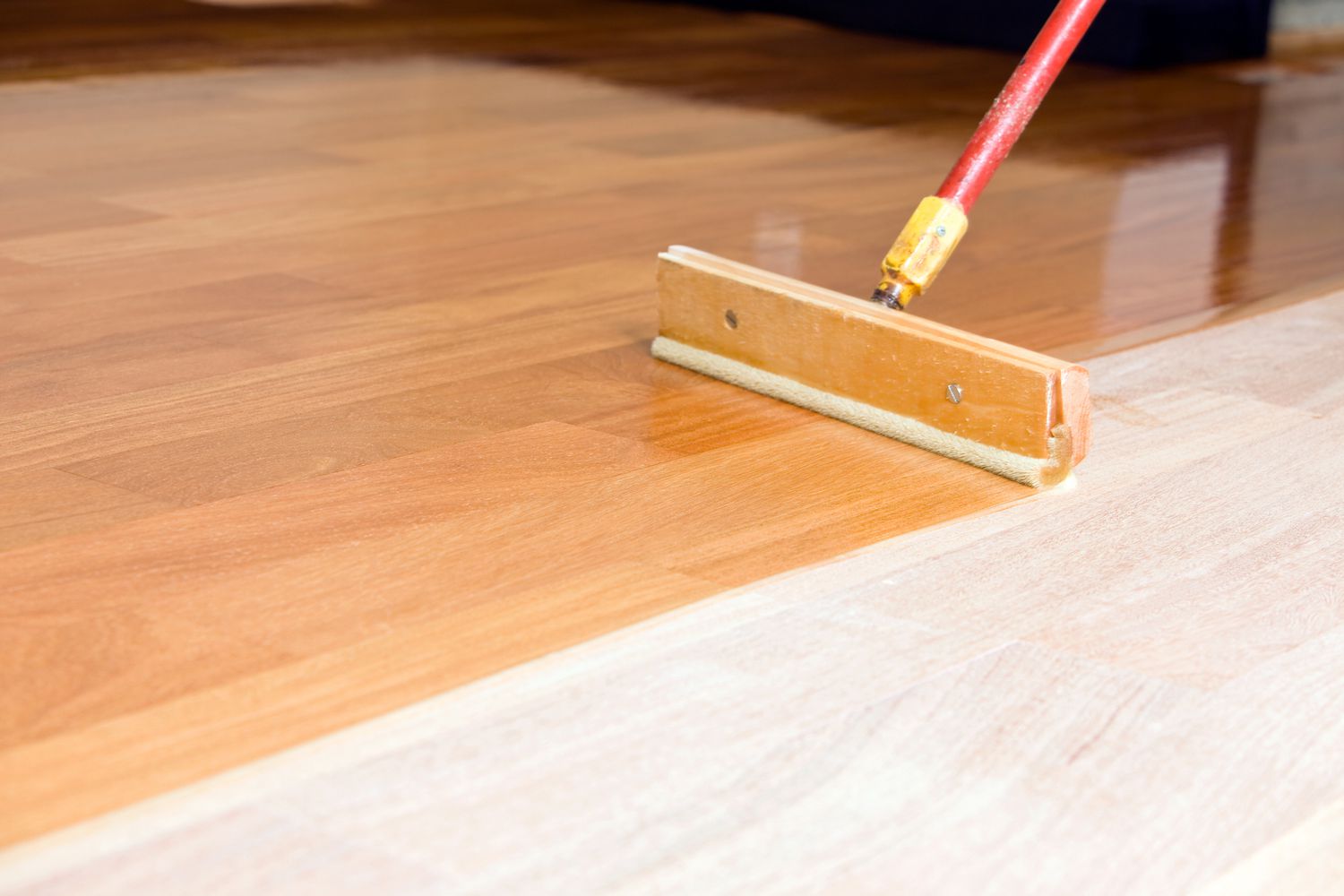
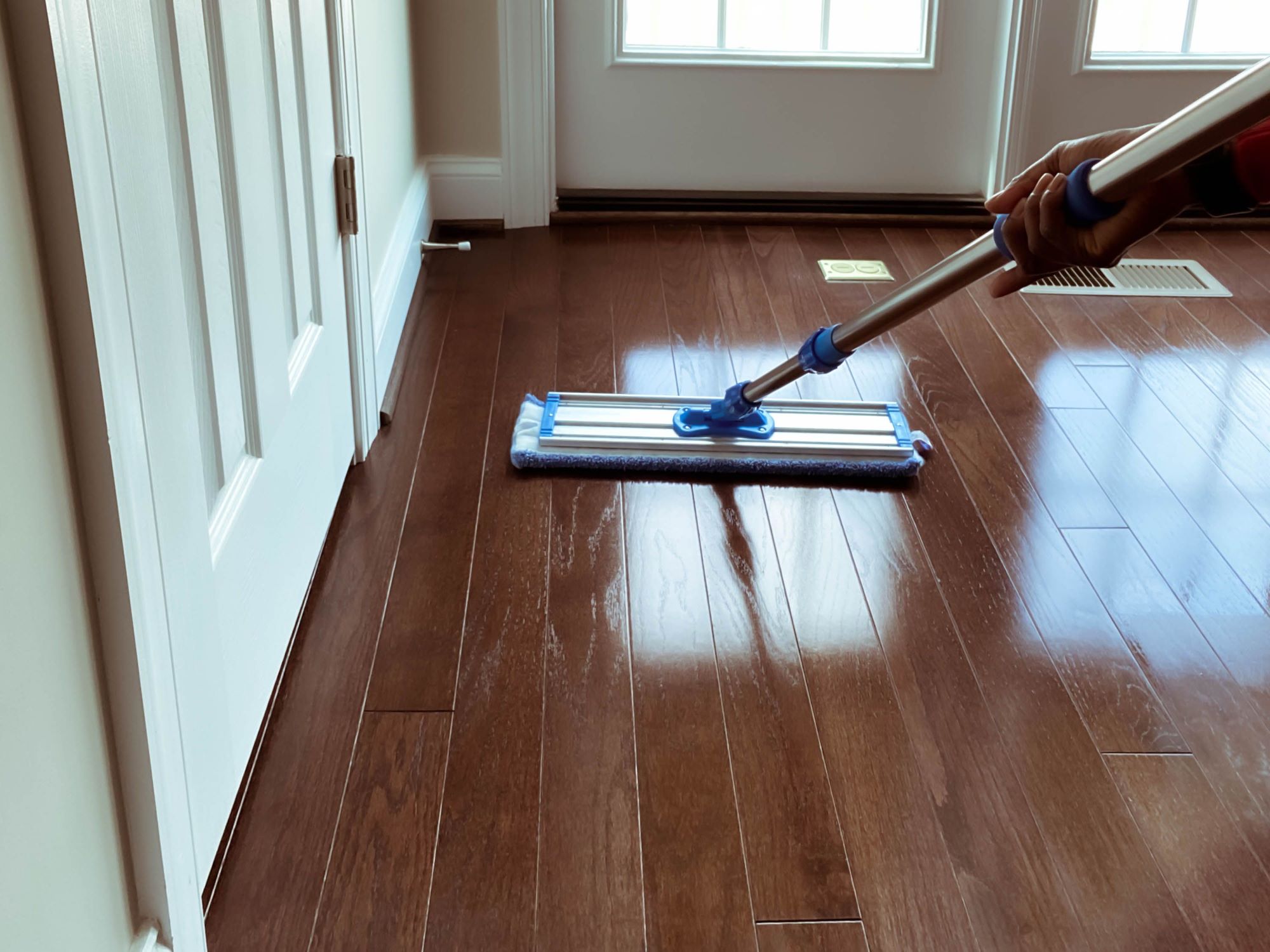

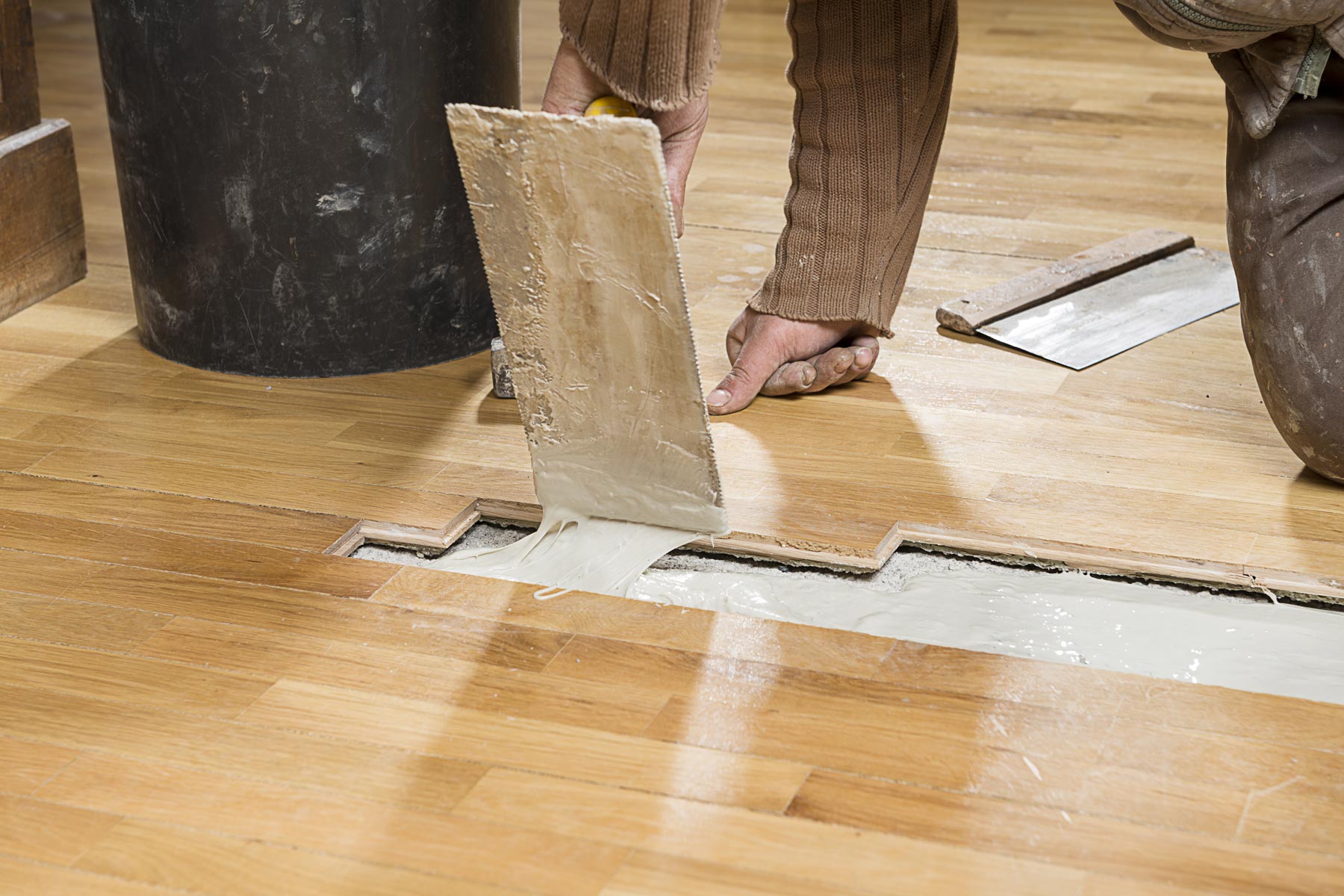
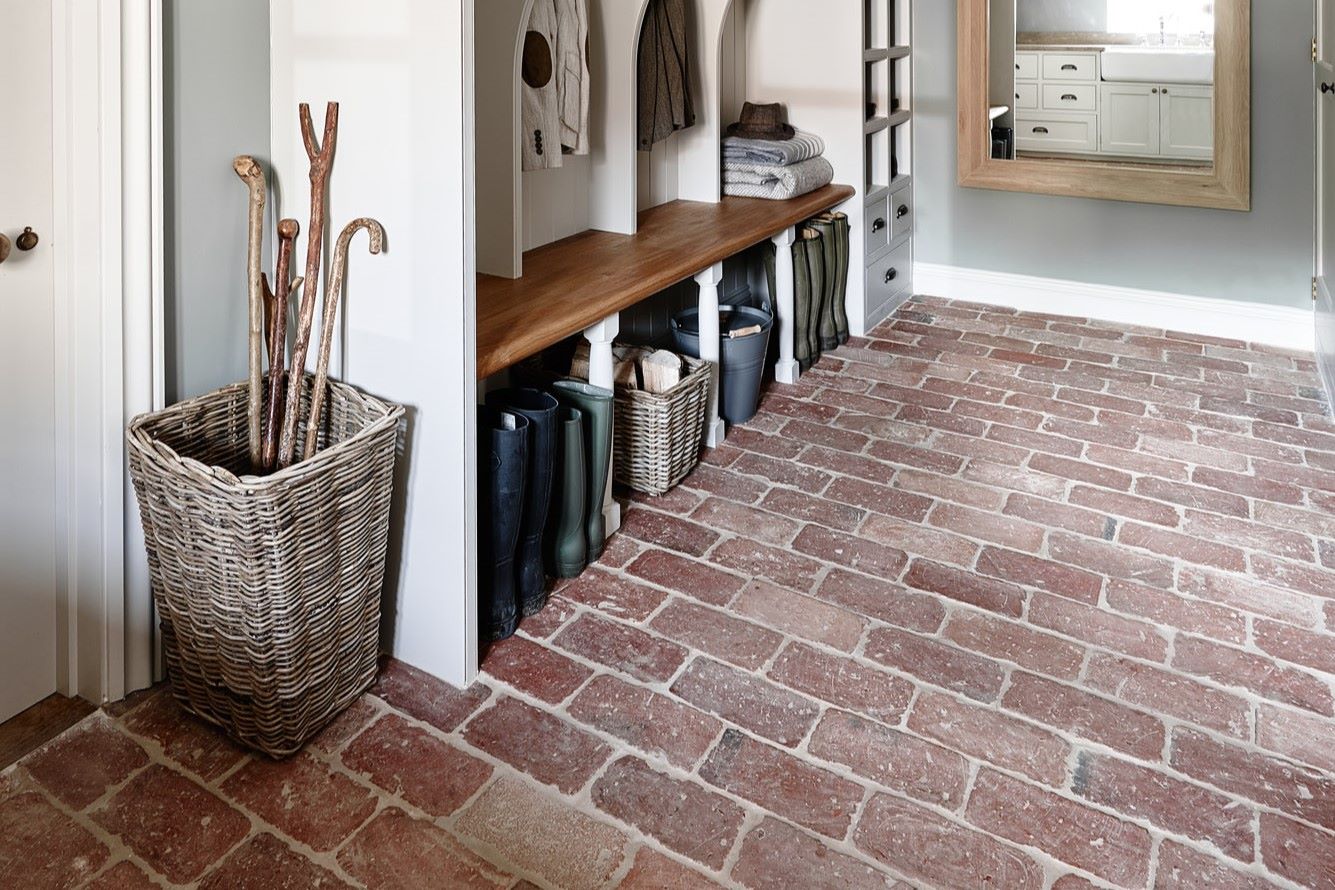
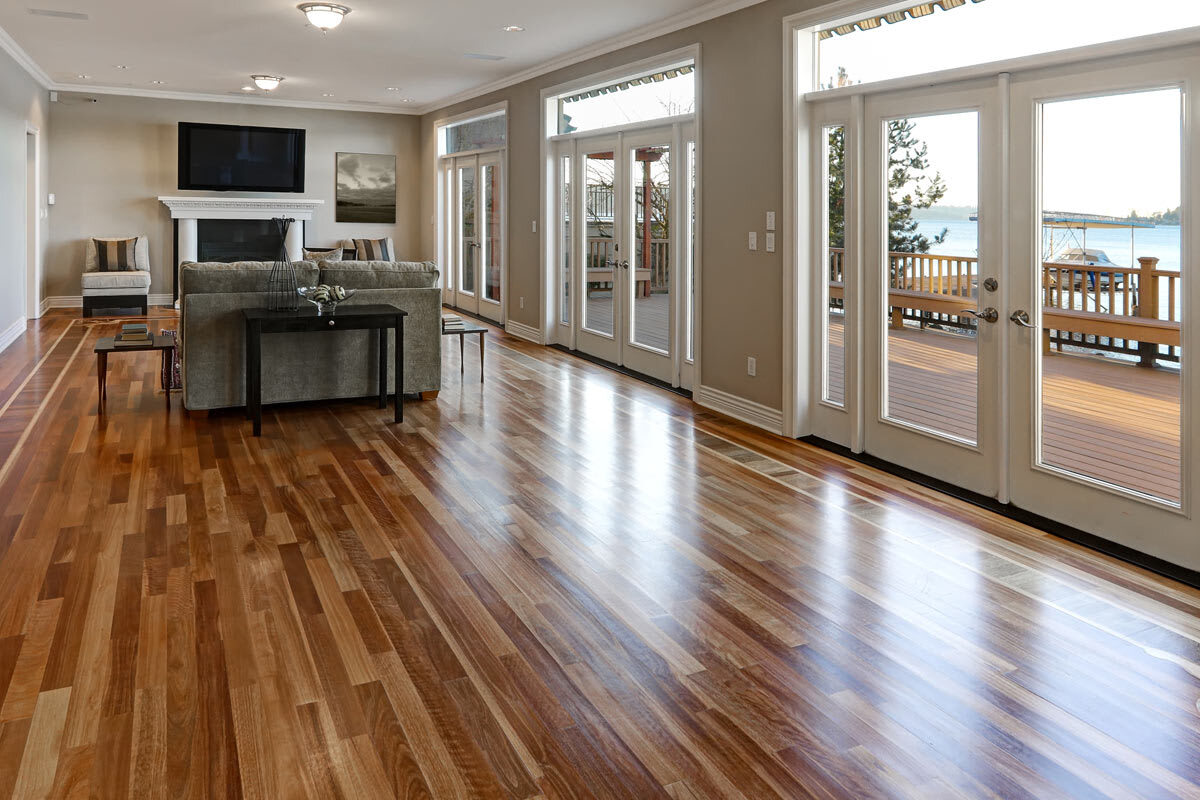
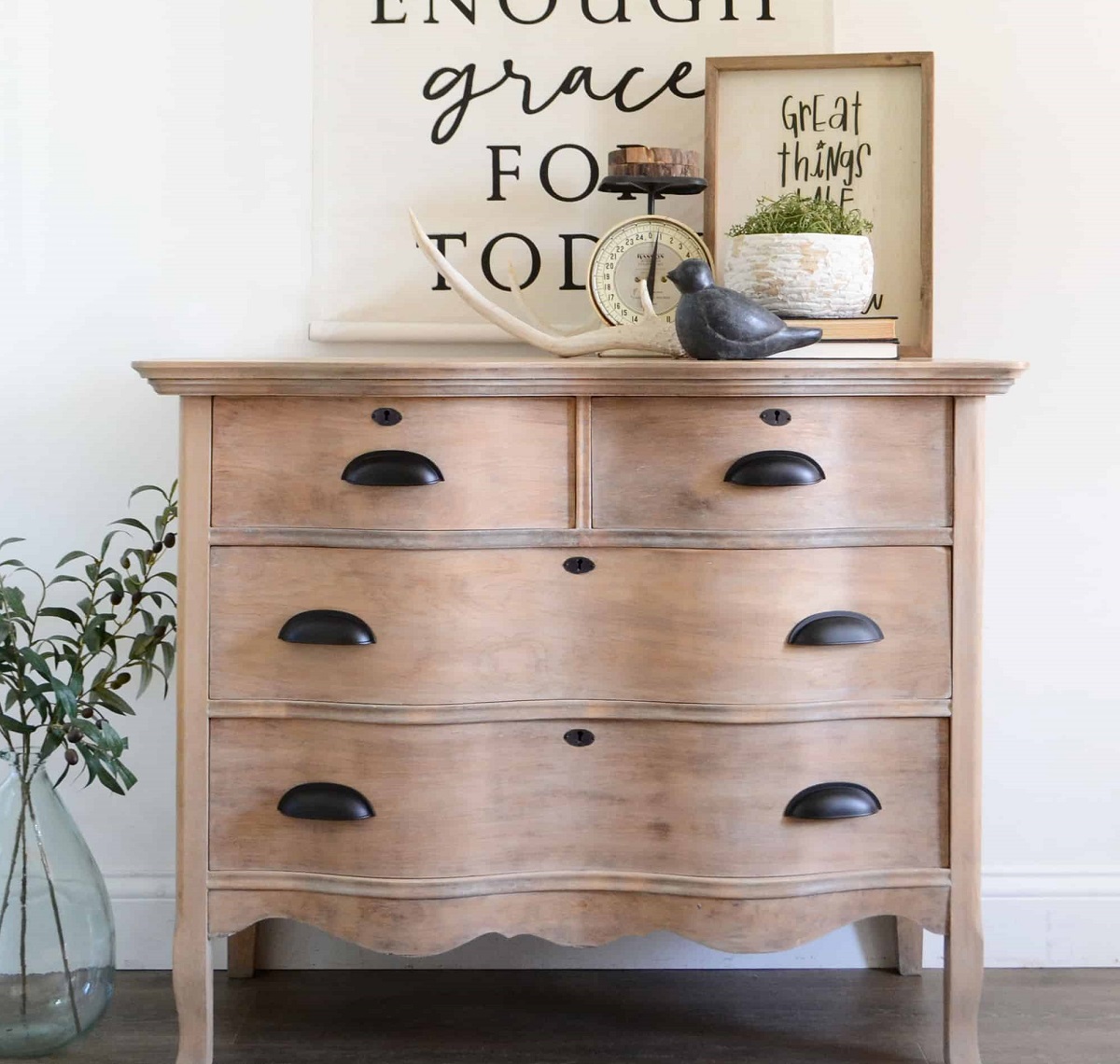
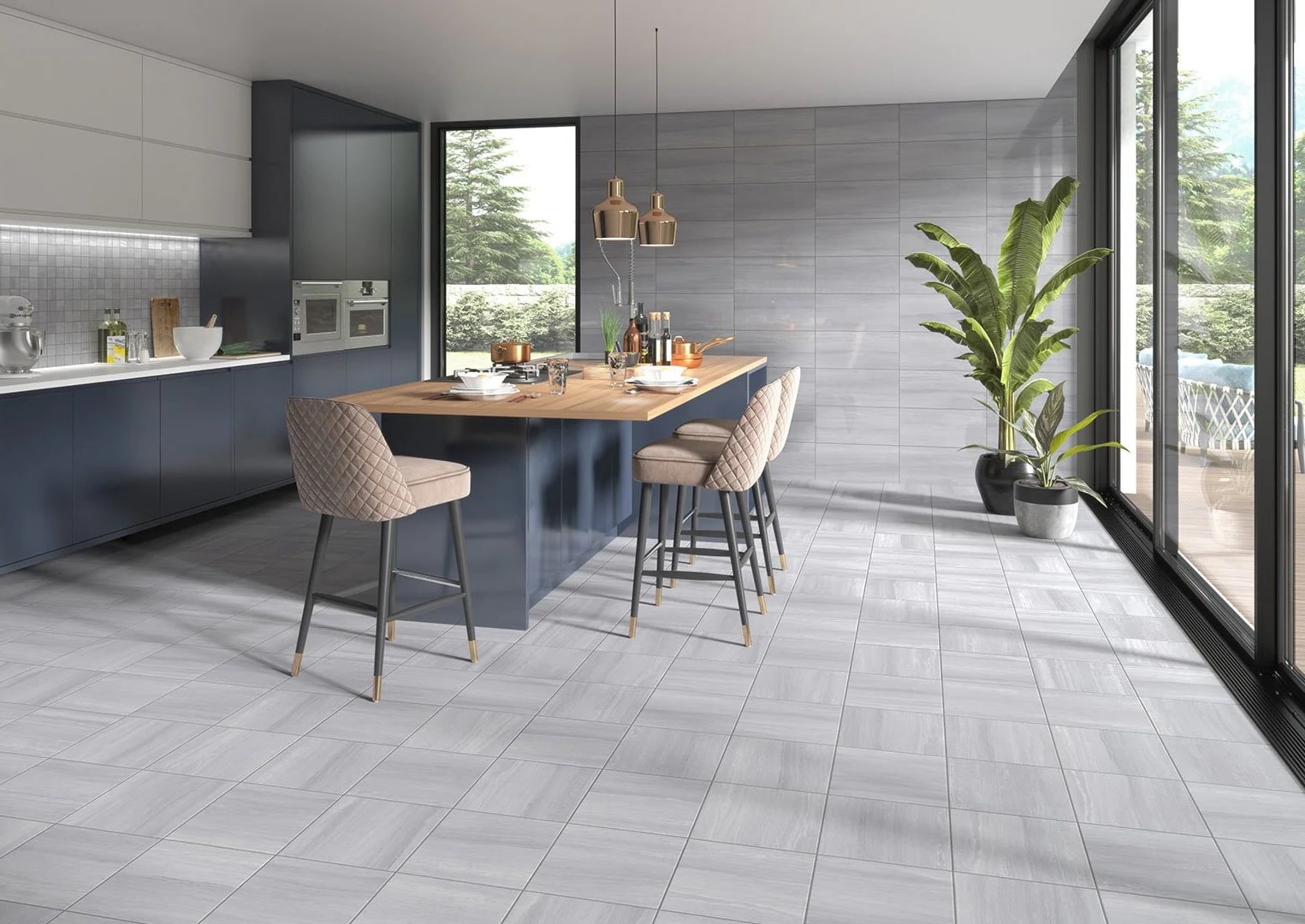
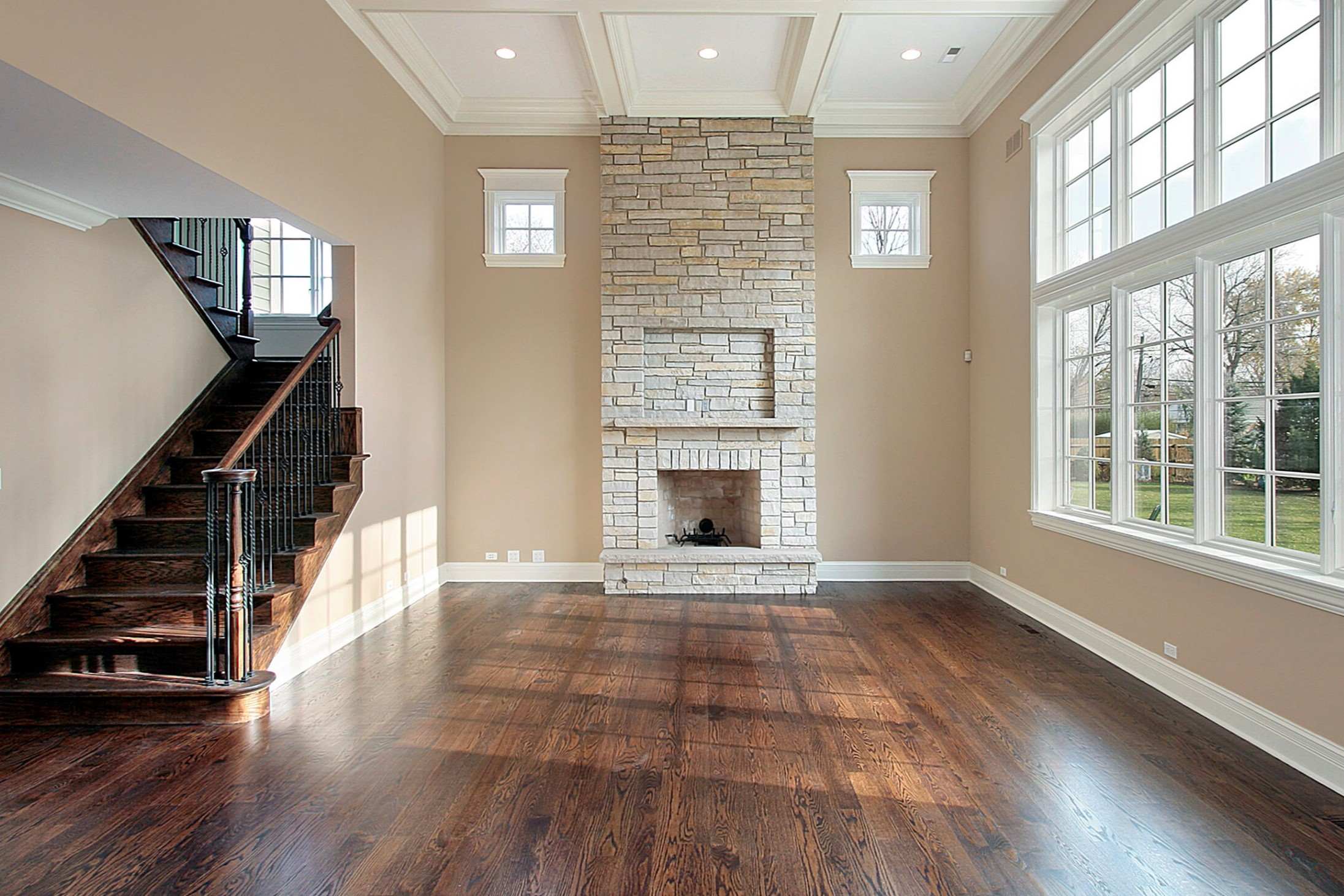

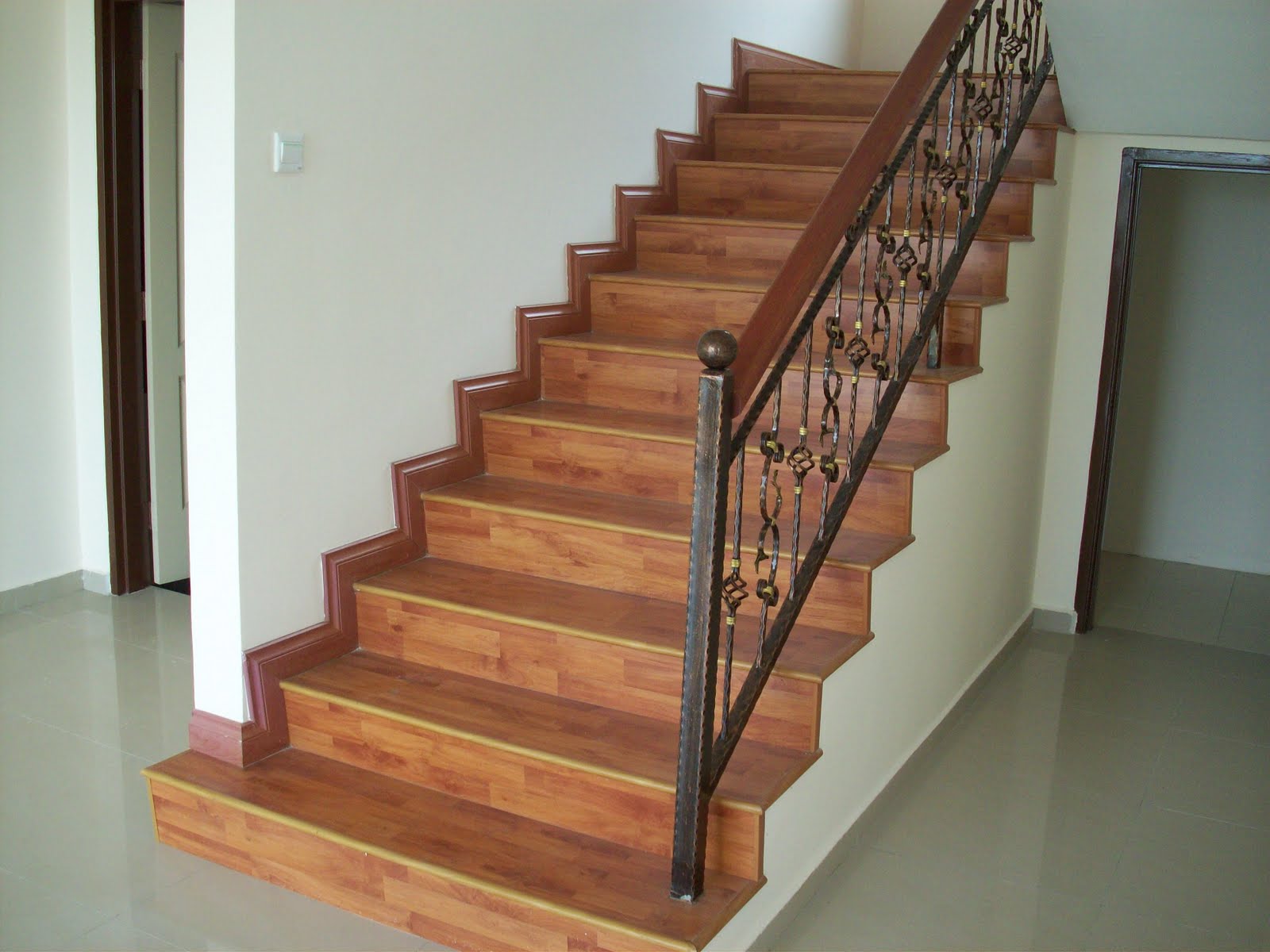
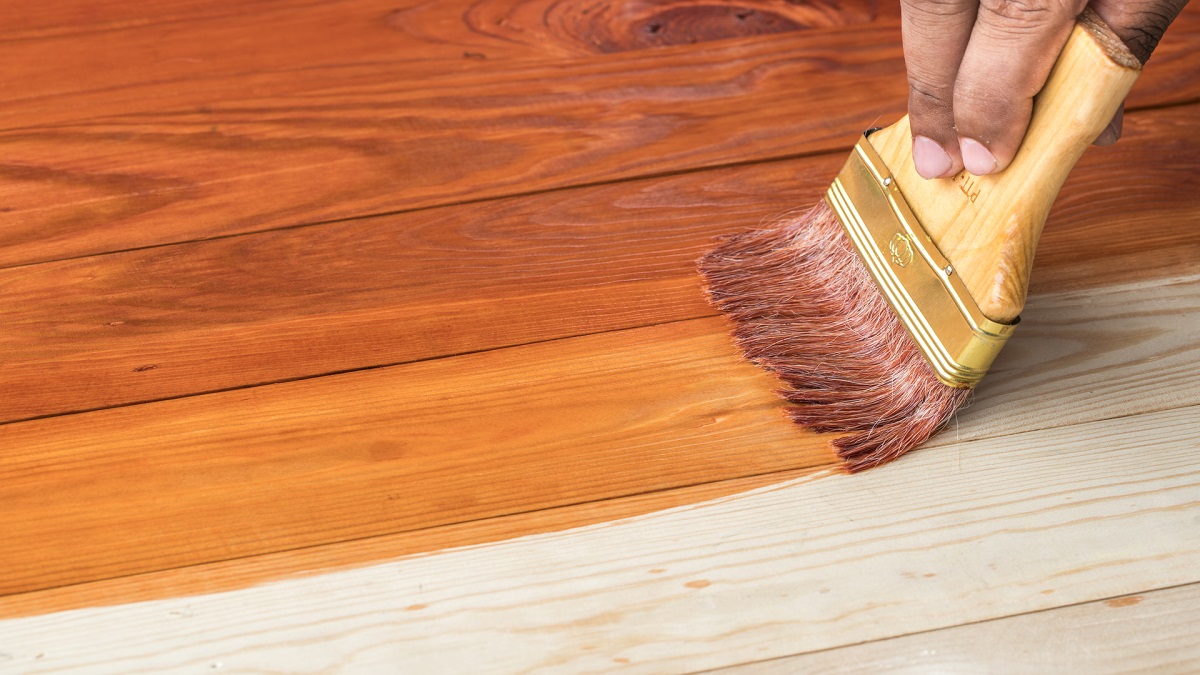

0 thoughts on “Guide To Cheap Wood Flooring Options”